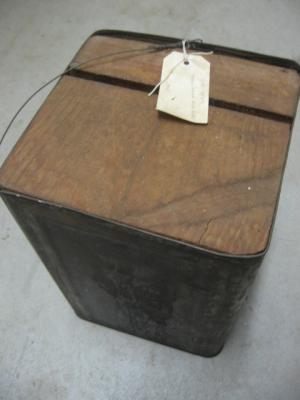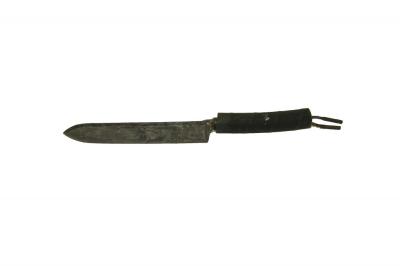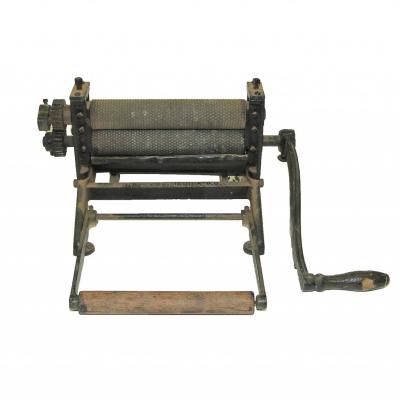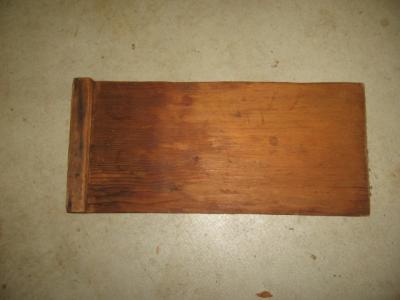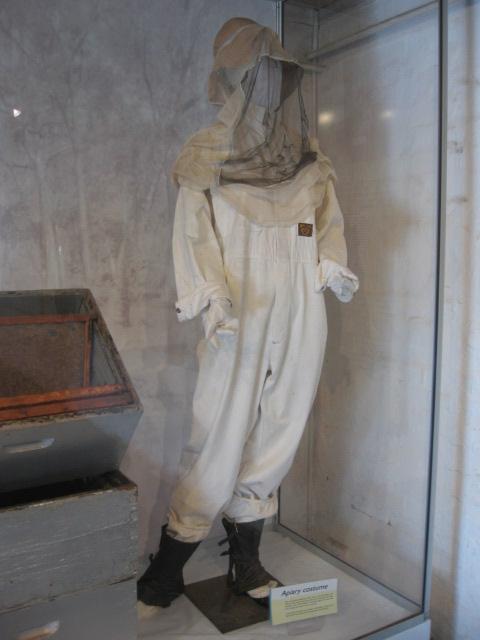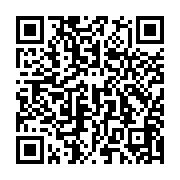APIARIST'S COSTUME
Apiarist's costume
a) Sleeve protectors - a pair of white calico fabric "sleeves" open at both ends. They have elastic bands sewn into the hems, presumably to be able to tighten around the arms. There is a single longitudinal seam on each. Both are very dirty, torn and stained with deteriorated elastic.
b) Face protector - tube shaped white cotton net face protector. A single seam to the RHS of the central face panel. Hemmed at the top and bottom with an elastic band at the top. There is a panel of black cotton net (480 x 320mm) at the front. This is heavily darned with many knots and snarls of black cotton thread. At the lower L and RHS corners of the black net two lengths of cotton tape have been sewn on, each measuring approx. 920mm each.
c) Pair of lace-up boots
d) Black leather boots with black leather laces with no aglets threaded through metal eyelets. They are 6 hole boots (12 holes in total). Seamed stitching is visible around the lace holes but leather is not hemmed. Thick, possibly injection moulded, plastic/ rubber soles with a Y shaped tread down the centre of the sole. Heel is 26mm. Sole edge has ribbed detail around the heel and along the edges of the sole. A looped tab of cotton tape is sewn to the outside of the top of shoe rim (opening?). Both shoes have a half inner sole.
e) Black canvas gaiters with leather lined seams. Each has two horizontal buckles at the top and halfway down the length. These are attached by leather strapping sewn to the canvas. They have corresponding thin leather belts on the opposite end. The ends of the leather is generally tapered except for the top belt on the right foot gaiter which is square. There is a brass ovular eyelet at the top for the corresponding belt to feed through. At the bottom edge there are two slide eyelets (brass?) and a corresponding flat hook on the inside of the other end. There is a vertical buckle on the bottom edge attached to a leather tab and on the opposite side a long leather belt that would feed under the sole of the shoe.
Associated with the Cook family, who had established an apiary at Coondle in the Toodyay district by 1902.
Details
Details
On boots: 10 inside a circle and MADE IN ENGLAND moulded into the sole.
